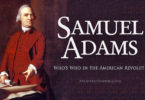There are a lot of different record sources out there you can use to discover your ancestors. Some of them are well known, others are lesser known, and some are totally unknown and you may be the first person to accidentally come across them in generations. One of the lesser known record sources for discovering your ancestors are the application papers for the Daughters of the American Revolution (DAR). This lineage society admits women ages 18 and older who can definitively prove with documentary evidence that they are directly genetically descended from someone who either fought in the American Revolution or who was instrumentally involved in helping the cause of independence during the war.
To apply, a person must use documentary evidence to prove every birth, death, and marriage in every generation from the applicant, going back to the Revolutionary ancestor. They must also prove the connections between the generations. One primary source or two secondary sources for each event in the application counts as acceptable proof. Once these documents are gathered and approved by the membership committee at the national level, the applicant is granted membership to a local chapter that sponsored them, and their application becomes part of the Daughters of the American Revolution library.
You can use these application papers to research your own family. Whether you are using them to apply to DAR yourself, or just to connect some missing generations in your family tree, the application papers are a terrific resource, because they provide information on many generations of each family, and everything is thoroughly documented for you. You can go to the DAR library in Washington, D.C. to research these papers for free. Some genealogical departments at public libraries have bound copies of application papers, but they are usually organized by the year the applications were approved, not by family name, and they don’t have more up-to-date applications included in them. They can still be good resources if you have the patience to wade through them.
One of the best ways to use DAR application papers to research your family tree is to get a membership to Ancestry.com. This powerhouse genealogy research website has an extensive collection of DAR application papers, and they are searchable by family name. You can use them to trace collateral branches of your family, get dates and places for family members in your direct line that you couldn’t find anywhere else, and even find names of spouses you couldn’t locate in any other place. Ancestry.com also has a large collection of Sons of the American Revolution membership applications (just like DAR, but for men) that you can use in the same way.
Whether you want to research in person in D.C. or a local library or do it at home online, this is one lesser known record source you want to make use of in your genealogy work. Whether you have a direct Revolutionary ancestor or not, you can still find out a lot about your family in these records.






